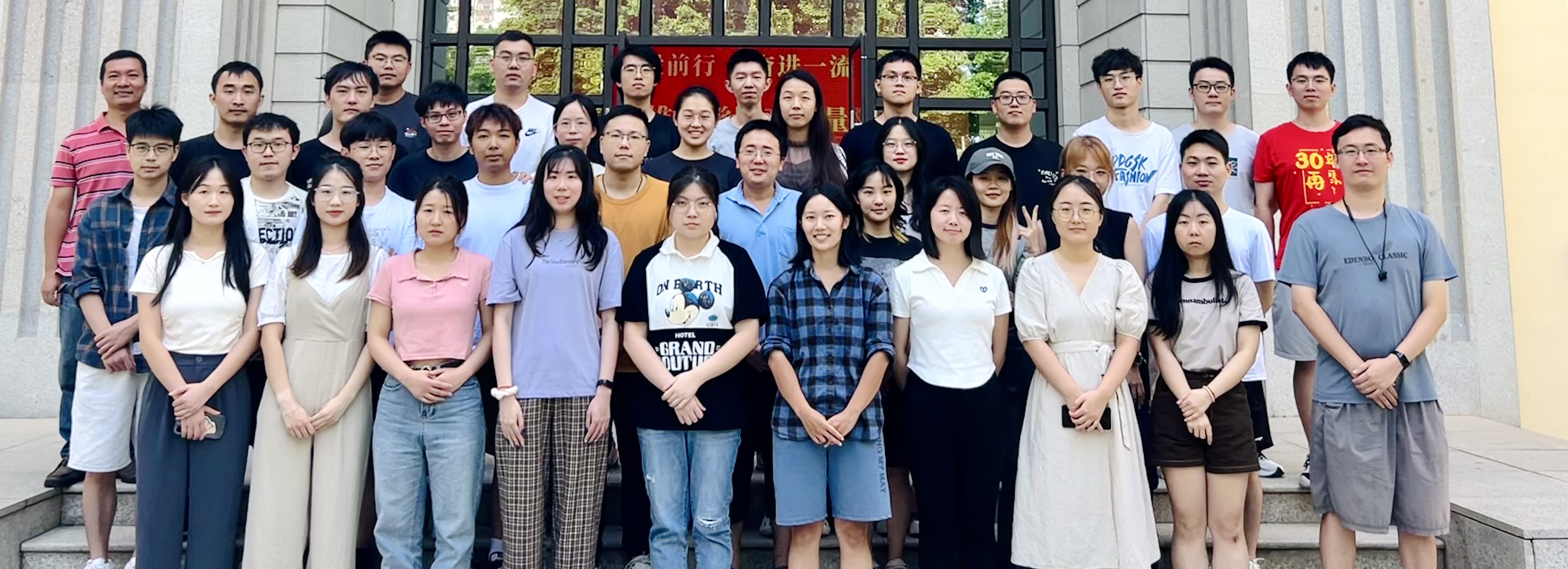基于相位光滑特性的高分辨率磁共振扩散加权图像低秩重建
Smooth Phase Constrained Low-Rank Reconstruction of
High-resolution Magnetic Resonance Diffusion-Weighted
Image
Respondent:Tieyuan Lu
Supervisor:Xiaobo Qu Professor/Doctoral supervisor
Chairman of the Reply Committee:Congbo Cai Professor Doctoral supervisor Department of Electronic Science, Xiamen University
Member of the Defense Committee:Lijun Bao Associate Professor Master supervisor Department of Electronic Science, Xiamen University
Yuyang Assistant Professor Master supervisor Department of Electronic Science, Xiamen University
Secretary of Defense: Xin Wang Senior Engineer Department of Electronic Science, Xiamen University
Time:May 20, 2020 at 9:00 AM
Place:Xiamen University Haiyun Park Physics and Electromechanical Building 307
----------------------------------------------------------------------------------------------------------------
摘要
磁共振成像(
Magnetic Resonance Imaging,
MRI
)是一种利用核磁共振原理的无放射性的医学成像手段。通常磁共振成像时间较长,并行成像的方法极大地
提高了成像的速度。扩散加权成像(
Diffusion-Weighted Imaging,
DWI
)是磁共振成像中一种独特的无损检测人体内自由水分子扩散情况的成像方法,在肿瘤诊断、中风等级评估和神经研究等方面有着广泛的应用。目前临床上常用的扩散加权成像方法是单次激发平面回波成像(single-shot Echo-Plane Imaging,ss-EPI)。
但是,单次激发平面回波成像容易产生图像扭曲且成像分辨率有限。多次激发平面回波成像(multi-shot Echo-Planar Imaging,ms-EPI)可以抵抗图像畸变,并且可以提高图像的分辨率。然而,多次激发扩散加权成像也导致不同次激发所采集的图像存在相位差,使得采集到的数据无法直接合成无伪影图像。如何重建多次激发扩散加权图像是一个亟待解决的问题。
本文首先提出基于多次激发扩散加权图像相位光滑特性约束的结构化低秩矩阵的无导航回波重建方法。利用某些磁共振图像具有相位光滑的特点构造结构化矩阵,并将不同次激发的图像所构成的结构化矩阵串联成一个大矩阵,约束该矩阵核范数最小化来重建图像。并根据每次激发成像的均匀欠采样特点,我们将核范数约束结合并行成像重建的 SENSE(SENSitivity Encoding)方法对 k 空间数据进行校验以提高重建图像质量。然后,我们利用部分奇异值和约束进一步加强矩阵低秩约束。仿真数据和实测脑部数据实验表明,与目前前沿的无导航回波重建方法相比,本文所提方法可以重建出高质量的多次激发扩散加权图像,重建结果具有更少的伪影和更锐利的图像结构。而且,在高激发次数采样下的重建图像质量的提升更加明显。
关键词
:扩散加权成像;结构化矩阵;低秩;磁共振成像;图像重建
ABSTRACT
Magnetic Resonance Imaging (MRI) is a non-radioactive medical imaging method that exploits the principle of nuclear magnetic resonance. Usually, the MRI takes a long
time, and the parallel imaging method dramatically improves the imaging speed. Diffusion-Weighted Imaging (DWI) is a unique imaging method for non-destructive detection of the diffusion of free water molecules in human body in magnetic resonance imaging. It is widely used in tumor diagnosis, stroke evaluation, and neuroscience research. At present, the most commonly used diffusion-weighted imaging method in the clinic is single-shot Echo-Plane Imaging (ss-EPI). However, single-shot echo planar imaging is prone to image distortion and has limited imaging resolution. Multi shot Echo-Planar Imaging (ms-EPI) resists image distortion and improves image resolution. However, the multi-shot diffusion-weighted imaging method also results in phase variations in the images acquired at different shots, making the collected data unable to be directly synthesized into a high-quality image. How to reconstruct multi shot images is an urgent problem.
This thesis first proposes a navigator-free reconstruction method based on the structured low-rank matrix derived from the smooth phase property of multi-shot diffusion-weighted images. A structured matrix is constructed using the smooth phase property of the magnetic resonance image. The structured matrices composed of different shot images are then concatenated into a large matrix. The diffusion–weighted image is reconstructed by minimizing the nuclear norm of the concatenated matrix. According to the uniform undersampling characteristic of multi-shot imaging, we combine the nuclear norm constraint with the sensitivity encoding (SENSE) scheme inparallel imaging reconstruction as data consistency to improve the quality of the reconstructed image. Then, we use the partial sum minimization of singular values to further encourage the matrix low-rankness. Simulation data and in vivo brain data experiments show that the proposed method is able to reconstruct high-quality multi shot diffusion-weighted images with fewer artifacts and sharper images structure than the state-of-the-art navigator-free reconstruction methods. Furthermore, the improvements in the quality of reconstructed image under high number of shots aremore obvious.
Key words:
Diffusion-weighted imaging; Structured matrix; Low rankness; Magnetic resonance imaging; Image reconstruction
欢迎广大师生莅临指导!

